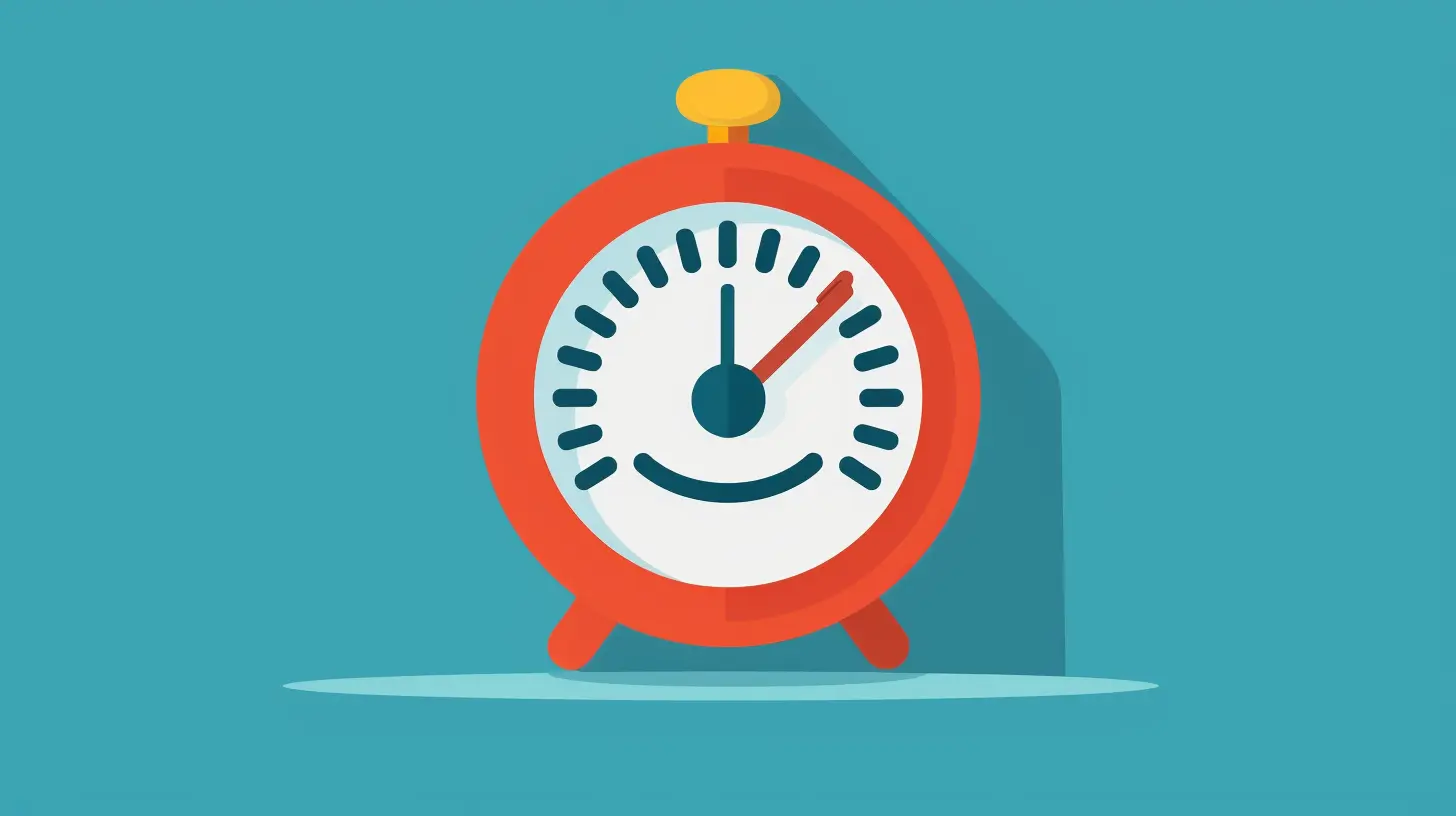How to Measure SaaS Customer Satisfaction Effectively
19 October 2025
Let’s be real for a second — if you're running a SaaS business and you're not laser-focused on how happy your customers are, you're walking on thin ice.
Customer satisfaction is not just a “nice to have.” It’s your lifeline. Unhappy customers churn (and fast), leave bad reviews, and worse — they tell others. Happy customers? They renew, upgrade, refer friends, and basically do free marketing for you. The ripple effect is real.
So how do you find out if your customers are pumped about your service – or quietly plotting their exit?
Well, my friend, that’s exactly what we’re diving into today.
Grab your coffee, and let’s chat about how to measure SaaS customer satisfaction effectively — without the corporate jargon and complicated nonsense.
Why Customer Satisfaction is Your SaaS Growth Engine
Before we get into the how, let’s talk about why this matters so much.Imagine your SaaS business as a car. Your product is the engine. But customer satisfaction? That’s the fuel. You can have the fanciest tech under the hood, but if you’re not making your customers feel like they’re getting value — the car’s not going anywhere.
Happy users = engaged users = loyal customers. It's that simple.
Still need convincing? Here’s what satisfied SaaS customers bring to the table:
- Lower churn rates
- More referrals
- Increased lifetime value (LTV)
- Product feedback that actually helps you grow
Think of satisfaction as the heartbeat of your SaaS company. You’ve got to track it, monitor it, and optimize it constantly.
The Core Metrics for Measuring Customer Satisfaction
Now, let's roll up our sleeves and explore the actual metrics you need in your toolkit.1. Net Promoter Score (NPS)
If you’ve ever been asked, “On a scale of 0 to 10, how likely are you to recommend us?” — yep, that’s NPS in action.It’s simple, quick, and surprisingly insightful.
Why it works: It gives you a snapshot of customer loyalty. Promoters (9-10) are super fans. Passives (7-8) are neutral. Detractors (0-6)? They’re likely to churn.
👉 Pro tip: Don’t just track the score. Follow up with an open-ended “Why?” question. That’s where the gold is.
2. Customer Satisfaction Score (CSAT)
This one’s usually a quick “How satisfied are you with [feature/support/product]?” question after a specific interaction.You can use a 1–5 scale, stars, emojis — whatever floats your SaaS boat.
Why it works: It captures customer sentiment in real-time. Great for support tickets, feature launches, or onboarding steps.
3. Customer Effort Score (CES)
The CES metric asks: “How easy was it to do [this task]?”Why does that matter? Because friction kills satisfaction. Fast.
Why it works: It helps identify pain points in your UX, onboarding, or support process. The lower the effort, the happier the customer.
Digging Deeper: Advanced SaaS Customer Satisfaction Techniques
Okay, so you’ve got your NPS, CSAT, and CES humming along. Awesome start. But let’s take it to the next level. Ready?4. Product Usage Analytics
People lie. But data doesn’t.If a customer says they love your product but hasn’t logged in for 30 days... that’s a red flag on fire.
What to look for:
- Daily/weekly active users (DAU/WAU)
- Feature adoption
- Time spent on the platform
- Drop-off points
Use behavior to validate sentiment. If a customer's NPS is high and they’re using your product religiously? That’s a satisfied SaaS customer right there.
5. Churn & Retention Analysis
Every time a customer cancels, it’s a moment to reflect (and collect data).Key questions:
- When do users usually churn?
- Is it before they hit "aha" moments?
- Are certain segments more likely to churn?
Combine this with exit interviews or automated surveys. Feedback from users who leave is like post-game footage — brutal, but crucial.
6. In-App Feedback Tools
Don’t make users dig into their inbox. Meet them where they are — inside your app.Tiny pop-ups asking, “Is this feature helpful?” or “How can we improve this page?” can yield mountains of insight.
The best part? It doesn’t interrupt the workflow. It feels natural.
The Power of Listening: Qualitative Feedback
Data is cool. Words are cooler. Why?Because behind every metric is a human with real feelings.
7. One-on-One Customer Interviews
Talking to customers directly is like opening a window into their world. You hear the tone, the struggles, the real emotion behind their answers.Ask them things like:
- What’s going well for you?
- What’s frustrating?
- If you could wave a magic wand, what would you change?
This kind of feedback doesn’t scale easily — but wow, is it powerful. Use it as your compass.
8. Social Listening & Online Reviews
People talk. Especially when they’re unhappy.Keep an eye on:
- Twitter/X
- Reddit
- Capterra
- G2 Crowd
- Trustpilot
Look for trends. Are users complaining about the same bug or praising a specific feature? Patterns here are your secret weapon.
Segment Your Data – Because Not All Customers Are Created Equal
If you treat all customer feedback the same, you’re missing the point.For example, a $10/month customer and an enterprise client won’t have the same needs or expectations. Nor should you measure their satisfaction the same way.
Segment your data by:
- Plan/tier
- Company size
- Industry
- Stage in the customer journey
This way, you tailor your responses — and product improvements — wisely.
Make It Actionable (Because Measurement Alone Isn’t Enough)
Here’s the harsh truth: collecting feedback is only half the battle. If it ends up buried in a spreadsheet, what’s the point?Create a Feedback Loop
Take user feedback → improve the product → let them know you listened.This builds trust like nothing else.
For example:
- You get 20 NPS responses asking for a dark mode
- You build it
- You send a note: “You asked. We built it.”
Boom. Instant goodwill.
Close The Loop With Support Tickets
Let’s say a customer gave a low CSAT after a support chat. Don't just say “Oops.”Email them. Apologize. Solve the actual issue — maybe even offer a discount or gift.
That effort? That’s what turns a bad experience into a wow moment.
Tools That Can Help You Measure SaaS Customer Satisfaction
You don’t have to do all this manually. There are incredible tools out there that make this easy.Some great ones include:
- Delighted (for NPS & CSAT surveys)
- Hotjar (for in-app feedback and heatmaps)
- Intercom or Zendesk (for support feedback)
- Mixpanel or Heap (for usage analytics)
- ChurnZero or Gainsight (for deep customer health scores)
Pick the ones that align with your goals and integrate well with your stack.
Tips to Boost Customer Satisfaction After You Measure It
Let’s wrap things up with some real talk. Measuring satisfaction is essential — but your ultimate goal is to increase it. Here’s how:- Onboard like a boss: First impressions matter. Make onboarding smooth and valuable.
- Empower your support team: Fast and personalized support = happy customers.
- Deliver quick wins: Help users get value as quickly as possible.
- Communicate often: Keep users in the loop about product updates, fixes, and new features.
- Celebrate customer wins: When your users succeed, shout it from the rooftops.
- Surprise & delight: A handwritten note? A quick thank you video? It goes a long way.
Final Thoughts: Build Relationships, Not Just Software
Measuring customer satisfaction isn’t just about numbers — it’s about building genuine relationships.Your SaaS product is more than a tool. It’s a part of someone’s workday, their goals, their business. When you treat it with that level of care and curiosity, people notice.
Listen closely. Act quickly. Keep improving.
And remember — the most successful SaaS companies don’t just focus on features… they focus on feelings.
Now, go make your customers smile.
all images in this post were generated using AI tools
Category:
Saas BusinessAuthor:

Remington McClain
Discussion
rate this article
1 comments
Ardent Warren
Happy customers = unicorns in spreadsheets!" 🦄📊
November 5, 2025 at 5:47 AM

Remington McClain
Absolutely! Happy customers are rare gems that drive SaaS success—let’s uncover how to find and nurture them!


